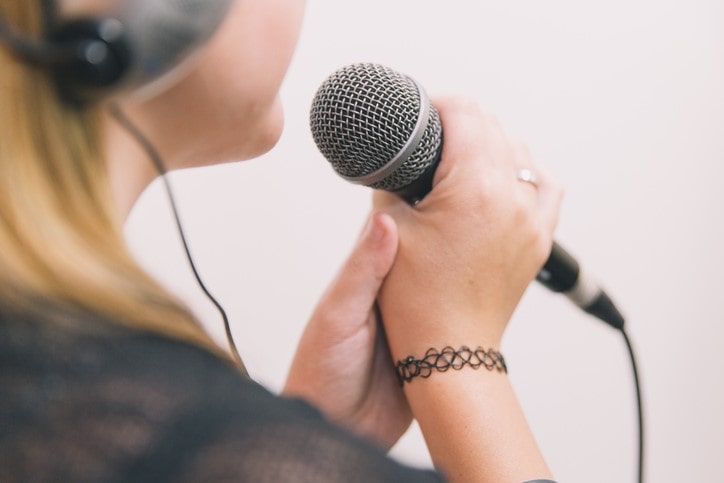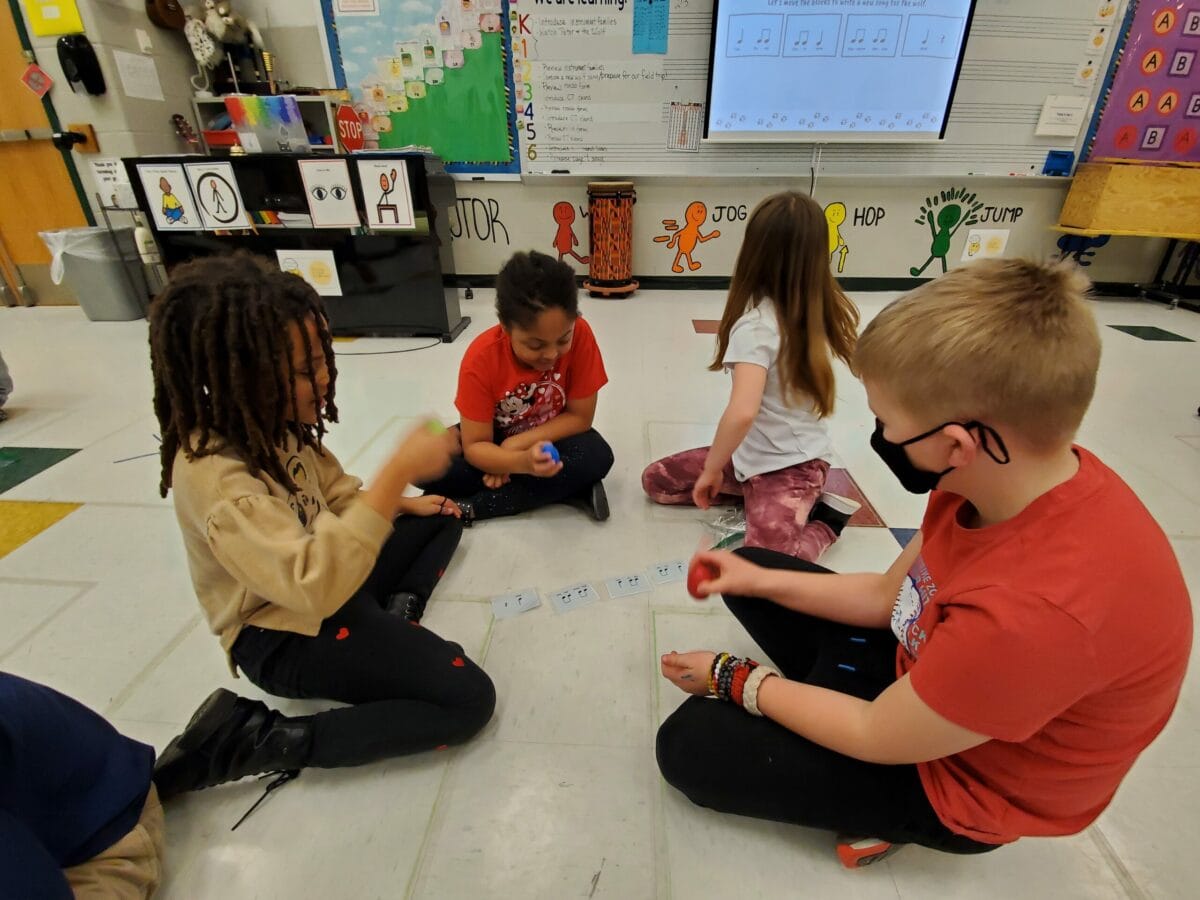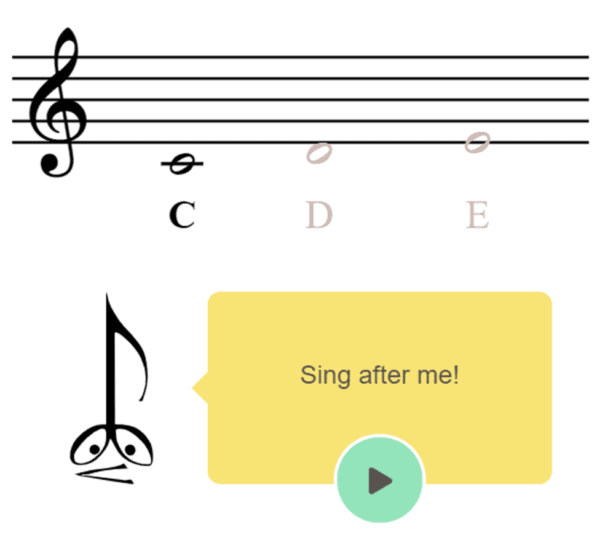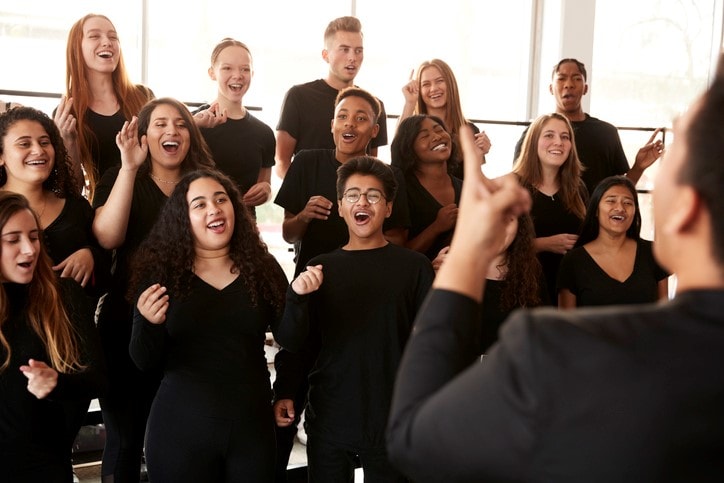/ News Posts / Top 10 Most-Read Music Education Blogs of 2022
Top 10 #MusicEd Blogs of 2022
In 2022 music educators were reading about new ideas for their music programs, inclusivity in their classrooms, and notably—teacher recruitment and retention, as education faces a critical moment in which we must plan strategically for the profession and ensuring students receive music education as part of a well-rounded education. Stay tuned this year to announcements about NAfME initiatives on that front.
To highlight last year’s blogs from fellow music educators, we’re looking back and sharing the Top Ten Most-Accessed NAfME “Music in a Minuet” Blogs from 2022. Keep an eye on your NAfME Notes newsletter every other Thursday for the latest articles. Subscribe today.
Did your favorite blog make the list?

iStockphoto.com | Eightshot Studio
Number 10: “I Lost My Wind Ensemble . . . And Saved My Music Program”
By NAfME Member Christian Robinson
I started Studio Ensemble at my school to offer a space for musicians who would have been typically turned away from a wind ensemble, choir, orchestra, or jazz band. You know, the kids who meet after school and play in a friend’s basement, or the kid taking guitar lessons so he can be the next John Mayer, or the singer who has an incredible voice, but never wanted to sing Mozart. Stop and talk to these students in the hallway, invite them to eat lunch in the band room, go to see them at the school talent show where they will surely be the best act, and find out what music they want to play. It won’t be anything you can find on the usual sheet music seller, that’s for sure.
Number 9: “Setting Up an Effective Guitar Classroom”
By NAfME Member Glen McCarthy, sponsored by Guitar and Accessories Marketing Association
Ideally the school should own a classroom set of matched instruments. Most veteran guitar teachers recommend nylon string (classical) guitars. for many reasons. Nylon String Guitars:
- Are much easier on beginner’s fingers.
- Can play all musical styles.
- Tend to break less frequently than steel string guitars.
- Can be easier to repair than steel-string guitars.
Read through the 21 more items in this thorough checklist from Glen McCarthy.
Number 8: “Getting the Most Out of Your Band or Orchestra Method”
By Dr. Charles T. Menghini, sponsored by Hal Leonard
Every situation is different. Starting grades, class size, length of class, frequency of class sessions per week, homogenous or heterogeneous groupings of instruments, and experience level of the teacher are all factors that impact the situation. Making it through Book One in a year is not a requisite for good teaching. Good teaching requires that you understand and stick to a pace that works best for your students and you. Read nine more tips from Dr. Menghini.
Number 7: “Gamifying Solfège”
By Gregory Ristow and Leah Sheldon, sponsored by uTheory
It’s no secret that integrating play and instruction leads to deeper, more engaged learning and better retention, no matter the age of learner or the subject. Students take ownership of learning and let go of self-criticism and fear in a playful environment, and teachers gain the freedom to listen in and focus on their students. That’s critical when it comes to building reading skills.
In this post we’ll share six favorite solfège games that we use in our teaching, drawing on both Dalcroze Eurhythmics and the solfège games available at uTheory.

Number 6: “Transgender Inclusivity in Schools: Easy, Necessary, and Life-Saving”
By NAfME Members Ær Queen and Nicholas Prosini
As a group, music teachers are incredibly thoughtful and caring people. We always want to do the best for our students, and we want our students to know they belong in our spaces. We see them over many school years and often build relationships that last long after graduation. The students who feel that sense of belonging are the students who continue interacting with music long after they’ve left our rooms.
If someone told you that 7-14% of your students belonged to a particular culture, most music teachers I have met would learn as much as they could about that group: their songs, traditions, and anything else that we can find so that those students feel included. When you find out that more than half of those students strongly considered suicide, and almost 1 in 5 of those students had made a suicide attempt in the past year, most music teachers would do everything in their power to help, right?
Number 5: “Reconsidering the Timeless Tale of Peter and the Wolf”
Sponsored by St. Louis Symphony Orchestra
Countless children and adults have been introduced to orchestral music since the first performance of Sergei Prokofiev’s symphonic fairy tale Peter and the Wolf in 1936. The St. Louis Symphony Orchestra (SLSO) has teamed up with the Endangered Wolf Center in suburban St. Louis and music educators around the world to leverage this iconic piece of music to educate about the importance of wolves in our ecosystem and change the narrative about wolves perpetuated by Peter and the Wolf.
The SLSO’s free Digital Concert presentation of Peter and the Wolf—a video and classroom activity package—is available for unlimited, on-demand free streaming on slso.org/education through January 2023.
Number 4: “5 Things Teachers Can Do to Recharge over the Summer”
By NAfME Member Dr. Lori Schwartz Reichl with Dr. Jaime Bonato
There is no tired like “teacher tired,” and these past few years have put that to the test. More than half of teachers are feeling stressed, fatigued, and nearing burnout (Mission Square Research Institute, 2021). Teachers make more than 1,500 decisions a day while teaching (Klein, EdWeek, 2021). These decisions include presenting curricular content, managing behaviors, and communicating with students, families, and colleagues. All these choices lead to “decision fatigue.” Yes, it is a real thing! Decision fatigue happens when your brain feels overloaded with having to make decisions, and in turn, can lead to stress and exhaustion (Berg, AMA, 2021). In addition to mental stress, teachers face physical and emotional stressors that over time can create chronic stress. Chronic stress leads to physiological changes, such as increased cortisol, also known as the stress hormone (Penn State, 2016). To try to combat these stressors and the tolls they take on us physically, mentally, and emotionally, we can work to destress and recharge over the summer break. Although personal and professional responsibilities may not end when schools dismiss for the summer, the break may allow for more flexibility or free time.
Number 3: “‘Musical Literacy’ and the Relevance of Music Notation”
By Sven Ahlbäck, sponsored by Notysing
You don’t have to learn music notation to create music, but it is valuable for exploring as well as creating music. Playing an instrument, singing in a choir, working with music for movies or video games you will encounter sheet music and most of the music we hear is actually rooted in knowledge about music notation. Music notation is the written language of music and just as written language complements spoken language complements making music by ear. . . .
Digital tools have resulted in a revolution in how music is created and mediated. Today, many have access to their own digital recording studio at home, with possibilities to record and process sound that was only possible in music studios not long ago.
Number 2: “20+ Surefire Ways to Warm Up Your Choir”
By Jennifer Moorhatch, originally published on NAfME Corporate Member J.W. Pepper’s blog
For some, vocal warm-ups for choirs may be little more than an icebreaker activity and a chance to get the voices moving. However, warm-up activities can be used in a more practical and productive manner when used to address larger issues—like vowel unification across the choir and repertoire-related skill-building. Your choristers can really grow in their skills and musicality with carefully structured warm-up activities that are purposeful and relevant to the choir.
Getting your choir to buy into the warm-up time in your rehearsal depends in large part on how interesting and useful they find the activities. It is important to keep your warm-up time flexible, fresh, and functional while choosing exercises that they also enjoy. I find it helpful to think of warm-ups in terms of groupings or families of exercises. Choose a few from each family for each rehearsal for maximum flexibility and practical application.
Number 1: “The Heartbreaking Truth about Education: Why and How Will We Survive?”
By NAfME Member Dr. Lori Schwartz Reichl with Ken Buck
The bottom line to fixing the problem: We MUST treat our teachers like the professionals that they are. Think of them perhaps in the same context as medical doctors for example. There is never a long list of demands in the form of legislation heaped upon doctors annually. The public rarely shows up at a doctor’s office to demand a doctor be fired. We must put education back in the hands of educators and trust that our teachers are highly trained professional artisans of their craft. Educators do not need the constant input of more stringent job requirements, even from those who may mean well. . . .
If we want to save public education from an almost certain disaster, we must be willing to turn the problem over to the educators themselves. We will be amazed at what they will accomplish in saving education.
Most-Read Music Education Advocacy Article
Read recent “Advocacy Bulletin” blog posts for the latest public policy news.
“Title I and Music Education: Allowable Uses”
The purpose of the Title I, Part A program under the Every Student Succeeds Act (ESSA) is to provide “all children significant opportunity to receive a fair, equitable, and high-quality education, and to close educational achievement gaps.” (Sec. 1001) Throughout its implementation, Title I funds have been a valuable resource to fund opportunities for student growth. However, well-rounded subject areas such as music education experience limited or little access to Title I funds.
Read “Top 10 Blogs” compilations from past years:
- Top 10 Most-Read Music Education Blogs of 2021
- Top 10 Most-Read Music Education Blogs of 2020
- Top 10 Most-Read Music Education Blogs of 2019
- Top 10 Most-Read Music Education Blogs of 2018
- Top 10 Most-Read Music Education Blogs of 2017
- Top 10 Most-Read Music Education Blogs of 2016
- Most-Read Music Education Blogs of 2015
Thank you to all of our NAfME Members who contributed to the past year’s blogs! Learn how you can submit a blog.
January 24, 2023. © National Association for Music Education (NAfME.org)
Published Date
January 24, 2023
Category
- Culturally Relevant Teaching
- Educational Topics
- Ensembles
- Innovation
- Music Education Profession
Copyright
January 24, 2023. © National Association for Music Education (NAfME.org)











